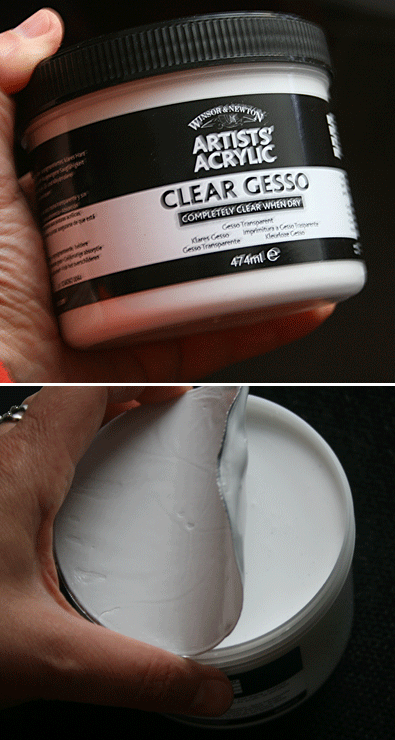
Putting the concepts "clear" and "gesso" together seemed a bit of a contradiction, so I painted some on the black cover of a sketchbook to see just how clear it did dry. I was surprised and impressed. I could see it only as texture where the light caught it. At some angles, it was barely visible, at others like a layer of fine dark-grey sand. Definitely one of those cases where it does what it says on the label: matt and transparent and gesso.
If you like painting on a white canvas, then you probably will never have a use for clear gesso. But if you like painting on a colored ground, then being able to create one by mixing a color into gesso without the color being whitened is very handy. (W&N recommends one part paint to four parts clear gesso, and using opaque colors.)
So how can a gesso, which seals raw canvas and gives it a gritty surface for paint (or pastel) to adhere to, be clear rather than white when it's dry. The answer is that it's made from a clear resin, without any pigment in it. I tried it on the black cover of a sketchbook and was impressed by how clear it does dry. On black, you see it as texture in the light.
The tooth is very fine, like very fine sandpaper, not coarse. It's quite fluid (W&N rate it mid-way between fluid and thick on the label) so it won't need diluting to use. I found it holds brushmarks well, but also smooth if you blend out the brushmarks. It's not texture paste, it's a primer, so don't expect it to create masses of texture as the beginning of a painting.
Update January 2012: I used some of this on top of a painting over a painted area that looked odd because it lacked the texture of the rest of the composition. Where it was applied fairly thinly, it dried clear, but where it was in a peak a few millimeters thick, it was semi-opaque, obscuring the color beneath. But this isn't what it's designed for -- it's meant as an initial layer. I ended up glazing over the section.
Disclosure: A review sample was provided by the manufacturer. For more information, please see our Ethics Policy.
